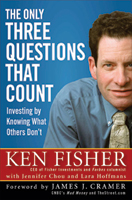 Image via WikipediaWhen you want to begin to invest, you must first be honest with yourself and do a risk profile test. Usually, the risk profiling will be a series of questions to illicit your degree of risk aversion, investment timeframe(horizon) and goals. However, that is only a generic question and is meant to get you started in a generic big picture portfolio allocation. For example, if you are a conservative investor with an intention to take out your investment in 10 years time to for your retirement, then a big picture portfolio allocation might be a 50% bond, 50% equities asset allocation.
Image via WikipediaWhen you want to begin to invest, you must first be honest with yourself and do a risk profile test. Usually, the risk profiling will be a series of questions to illicit your degree of risk aversion, investment timeframe(horizon) and goals. However, that is only a generic question and is meant to get you started in a generic big picture portfolio allocation. For example, if you are a conservative investor with an intention to take out your investment in 10 years time to for your retirement, then a big picture portfolio allocation might be a 50% bond, 50% equities asset allocation.From there, you need to further refine your investment outcome for your individual investments within the asset classes of bonds and equities.
This is akin to what you would do every year with your supervisor. He/She will sit down with you and ask you to set your goals which must be :-
- Specific - Identify why you need this investment and what you intend to get out of this investment. Is it a theme you believe in? Or is this meant to be a core investment in your portfolio? Is it for capital preservation or is it for capital appreciation?
- Measurable - You need to have a benchmark to measure the performance of your investment. If not, you will never know whether your investment is performing as claimed. For example, if you are invested in an unit trust/mutual fund that is targeted at US Market and the fund is proclaiming a 20% annualised return. You need to get an appropriate index like the S&P500 index and compared against it. If S&P500 returns 10% Year to date(YTD) and your investment is returning only 7% after fees, you might want to re-evaluate your investment decision.
- Attainable & Realistic - If you expect a very high return on your investment but your risk profile and investment horizon indicates otherwise, you might want to reconsider whether it is really realistic to demand that type of return. Set realistic & attainable goals for your investment and you will not be forced to make speculative bets to achieve your desired returns. You will be more motivated when you achieve your target and you then set new stretch targets.
- Timely - Or rather the time horizon (timeframe). Your timeframe will influence your investment strategy. A short 1 year timeframe might meant your value liquidity for a forseeable future needs one year from now. Or the investment might be meant as a theme you believe will do well for this one year.
Now that you've found what investment to buy, how do you determine whether you should buy it and when you should buy it?
For all investments, this is a must do for me. I consider the macro outlook, risk reward ratio and then consider 4 scenarios for every investment. The four scenarios are 1) Up a lot, 2) Up a little, 3) Down a little and 4) Down a lot. Usually, I will consider it worthwhile to buy if it's not scenario 4 and the risk reward ratio is adequate for the risk I am taking. Kenneth Fisher's The Only Three Questions That Count is a good read.
For equities, I will further used fundamental analysis to determine whether an investment is of good value. I will go through the checklist in this book called "The New Buffettology" which tries to explain how Warren Buffet rationalise his investment decision.
When to buy? I will usually use simple technical analysis for this. I believe in Trend and you can't fight the trend. If it's a down trend, don't catch a falling knive. How do you determine that? Well, when the price is above the 200 day Exponential Moving Average (EMA), it usually signals an uptrend. There will be others who employed more indicators like RSI and what have you, but I have found 200 day EMA enough for my use.
Ok, I am done with explaining the 3 rules I employed when I do investment. With these 3 rules, I have been enjoying my travel on the highway with minimal bumps throughout the journey.
No comments:
Post a Comment